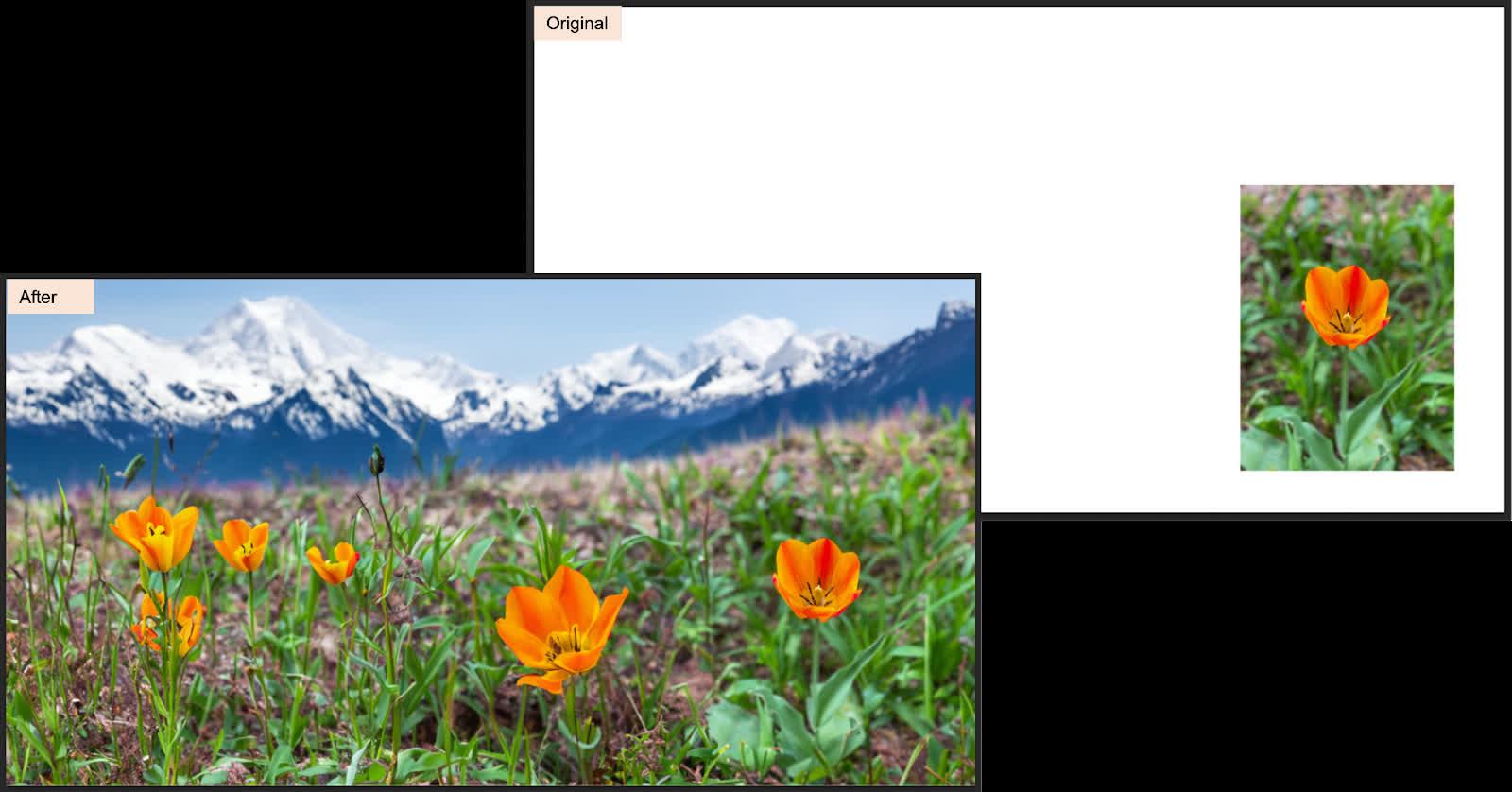In brief: Photoshop subscribers can now use Adobe's generative AI models to manipulate existing pictures based on prompts. The company demonstrated a new tool letting users add or remove objects while maintaining a consistent image. The latest version of Photoshop also includes other relatively minor additions.
Adobe Firefly arrived in the latest version of Photoshop this week. Its most significant addition is an AI-based tool called Generative Fill, which can use prompts to smoothly but dramatically transform images.
The company's before-and-after demonstrations show Photoshop adding new objects to images and extending image borders. One example converts a portrait photo of a flower into a landscape depicting a field full of similar flowers with mountains in the background. Another adds a puddle, a fence, and a truck to a picture of a dog running down a road. Multiple demos show accurate reflections in newly-generated bodies of water.
Users can make changes by selecting parts of an image and entering natural-language descriptors into a prompt. The feature then suggests potential ideas based on context. Each new element of generative content goes into a dedicated layer to preserve the unaltered image.

The AI can also work in reverse. Photoshop's Remove tool can cut objects from images while maintaining visual continuity in complex backdrops. Photoshop previously used Content-Aware Fill to delete unwanted objects from photos with mixed results.
The Photoshop update also adds a context-based menu bar whenever users make selections. The bar lists recommended tools and actions to cut the number of clicks needed for a complex task. An improved gradient tool also gives users finer control.
Game over, thanks for playing pic.twitter.com/CWs3sjOLMn
– @jason (@Jason) May 24, 2023
In March, Adobe revealed Firefly, the collective name for its generative AI libraries, while confirming plans to plug it into applications like Creative Cloud, Document Cloud, Experience Cloud, and Adobe Express workflows. The company also stressed its intention to avoid copyright-related controversies surrounding generative AI, but it's unclear if Adobe will be successful.
Adobe trained Firefly on stock photos, public domain content, and open-licensed material, meaning anything users make with Generative Fill should be legally safe to publish. However, this means all Adobe stock photo contributors are helping train the company's AI without appropriate compensation. Cloud subscribers can explicitly exclude their work from AI training with a special tag. Adobe will clarify its plans to rectify the situation after Firefly exits beta.